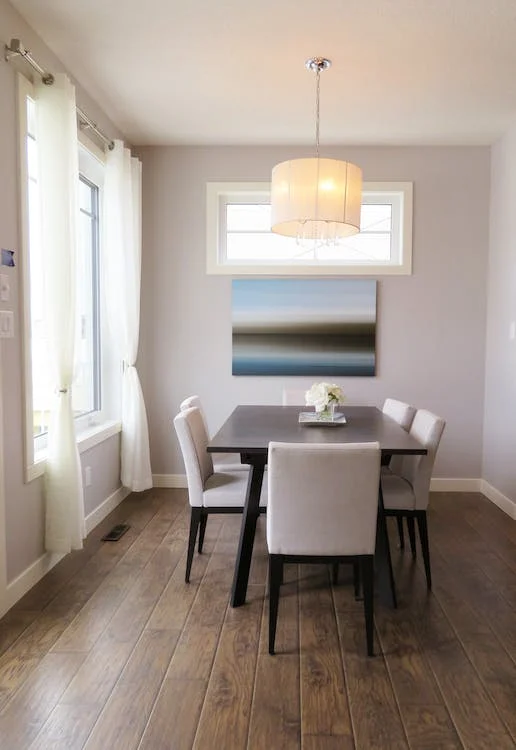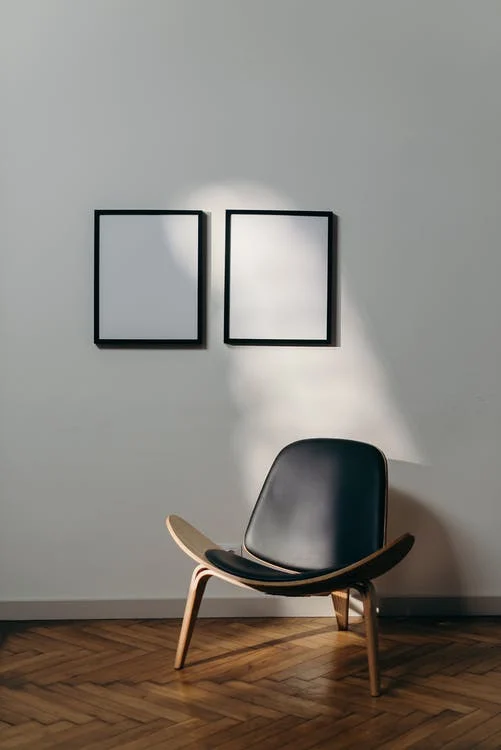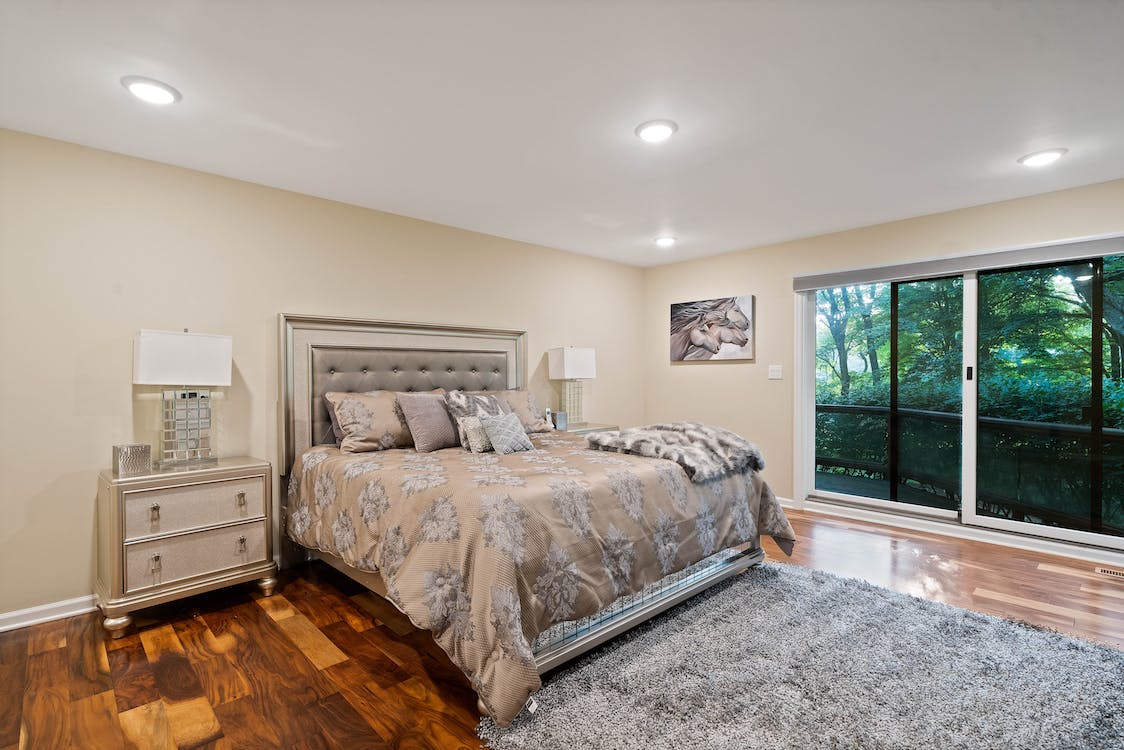Finding one’s way through all the parquet offers in specialized stores or shops is sometimes tricky. There are significant differences between each model: floating parquet, nailed parquet, glued parquet, nailed parquet, or glue-down parquet. It is essential, above all, to determine what is a solid parquet and a glued parquet. Both products have the same final appearance but are technically very different. Both contain noble wood, but not in the same proportions. To enlighten you and thus better understand and choose, we tell you everything about the glued parquet!
What is a glued parquet floor?
Let’s first recall the notion of “parquet”. The floor must be made of noble wood that is at least 2.5 mm thick to qualify for this designation. The laminate is, therefore, a parquet floor if it respects this primary rule.
There are products with lower facings, not parquet but veneer flooring. Laminate flooring is excluded from the parquet family because it does not have a noble wood layer.
In short, laminate flooring comprises 3 plies, a wood fibre panel or a resinous lath, a counterbalancing sheet on the reverse side and a noble wood facing of 2.5 mm minimum on the top. These 3 parts are assembled in the factory by pressing them together.
Glued parquet and facing
The facing is an essential element; it is the “wear layer” of the laminate floor. The thicker the facing, the more resistant the laminate, especially to punching. This will also allow you to renovate it longer, as a laminate floor can be sanded like a solid wood floor in a renovation.
Note: for renovation sanding, we remove 1 mm of wood at most, and we make, on average, a sanding every 10 years.
The different types of laminate flooring
There are two types of laminate flooring:
– the multi-strip (2 or 3 strips on the same width of blade);
– single strip (1 strip).
Multi-strip floors are more affordable in terms of budget but often less aesthetic. You will have the look of several small strips in one single strip. It is the best compromise to have a real parquet floor at home for a small budget.
Single strip laminate flooring offers a much more comprehensive range of colours, sizes and finishes. Single-strip engineered flooring is a single plank, close to the look of solid wood flooring.
Good to know: laminate floors are often sold “factory finished”, so they are ready to install. You will have chamfers, either 2 on the length or 4 on the 4 sides.
Why choose a laminate floor?

Advantages of glued parquet
First of all, unlike solid parquet, the construction of engineered parquet allows for wide and long strips, thanks to their excellent stability. This is a major advantage, but it also has other important benefits.
– Laminate flooring is generally equipped with a “click” assembly system that allows the boards to be installed together without glue.
– The recommended installation for this type of parquet is the floating installation; it is, therefore, fast to install compared to a glued structure, which is mandatory for a solid parquet.
– Laying a laminate floor is easy and widely accessible to a good handyman.
– Finally, the laminate floor can be renovated like a solid floor; it can be sanded to return to its raw state, re-varnished or re-oiled. You can also change the colour by applying a new shade.
Disadvantages of engineered flooring
On the other hand, the following disadvantages of engineered flooring are to be considered:
– The laminate floor does not have the “nobility” of solid wood flooring, even if technically it is close.
– The floating installation is sometimes a disadvantage because the floor is not integral to the support. The acoustic performance can be altered for transmission noises (from one floor to another) and transmission noises (walking noises).
– Even if the parquet floor is more stable than a solid floor, it reacts to the same constraints as a solid floor (temperature, hygrometry, expansion, etc.).
– If you choose a glued parquet floor with a small facing (2.5 mm), it will not last as long for renovation.
Note: Nothing prevents you from installing a glued parquet floor. The acoustics will be better, but the installation will be longer and more expensive (glue price).
How to choose a laminate floor?
Engineered flooring and aesthetics
Engineered wood floors are available in many wood species: beech, wenge, maple, walnut, etc. The most common wood is oak, which is widely available in all sizes, finishes and colours. It is the most sold wood, both solid and laminated.
The choice of wood is, above all, a matter of taste. However, beware of certain species that may present some constraints. Make sure you get the correct information before you buy!
As for finishes, you will find today as many varnished as oiled engineered floors.
What is glued parquet used for?

I prefer laminate flooring with a minimum facing of 3.2 mm for the most frequented living rooms. The thickness of the facing will determine its resistance wear. A parquet floor with a 2.5 mm facing will be sufficient for a bedroom.
Dimensions of laminate flooring strips
Engineered wood floors are available in various widths from 90 to 300 mm. A “wide” board is a 180/190 mm board; the offer on this width is significant.
You will find lengths from 1200 mm (short for a laminate) to 2400 mm.
Attention: if your pieces are small, too much length will lead to cuts. Also, handling long distances can be complicated if you live on a second floor! Take these different constraints into account before purchasing.
Laying techniques for laminate flooring
In principle, a glued parquet floor is installed floating, i.e., not glued to the support. The acoustics will be better (noise when walking reduced), which can also be recommended when laying on underfloor heating. However, nothing prevents you from laying a glued parquet floor in full or with a cord.
Some laminate floors do not have a click system and are presented like solid wood floors in tongue and groove. You can still lay a floating floor with these engineered floors, but you will need to glue the tongue into the groove to stabilize the system.
How much does engineered flooring cost?
The cost of engineered flooring is highly variable and depends on several criteria:
– the size of the strips (width, length, thickness of the facing);
– the wood species chosen (oak, beech, maple, walnut, wenge);
– the finish (the more the floor is worked in a factory, by its colours or effects of structure, the more it is expensive.

Comment (1)
Anhydrite Screed As A Floor Covering | Home deco id| 15 December 2022
[…] Sound off in the comments section below, and tell us what you want to read next and if you want to read more about flooring. […]